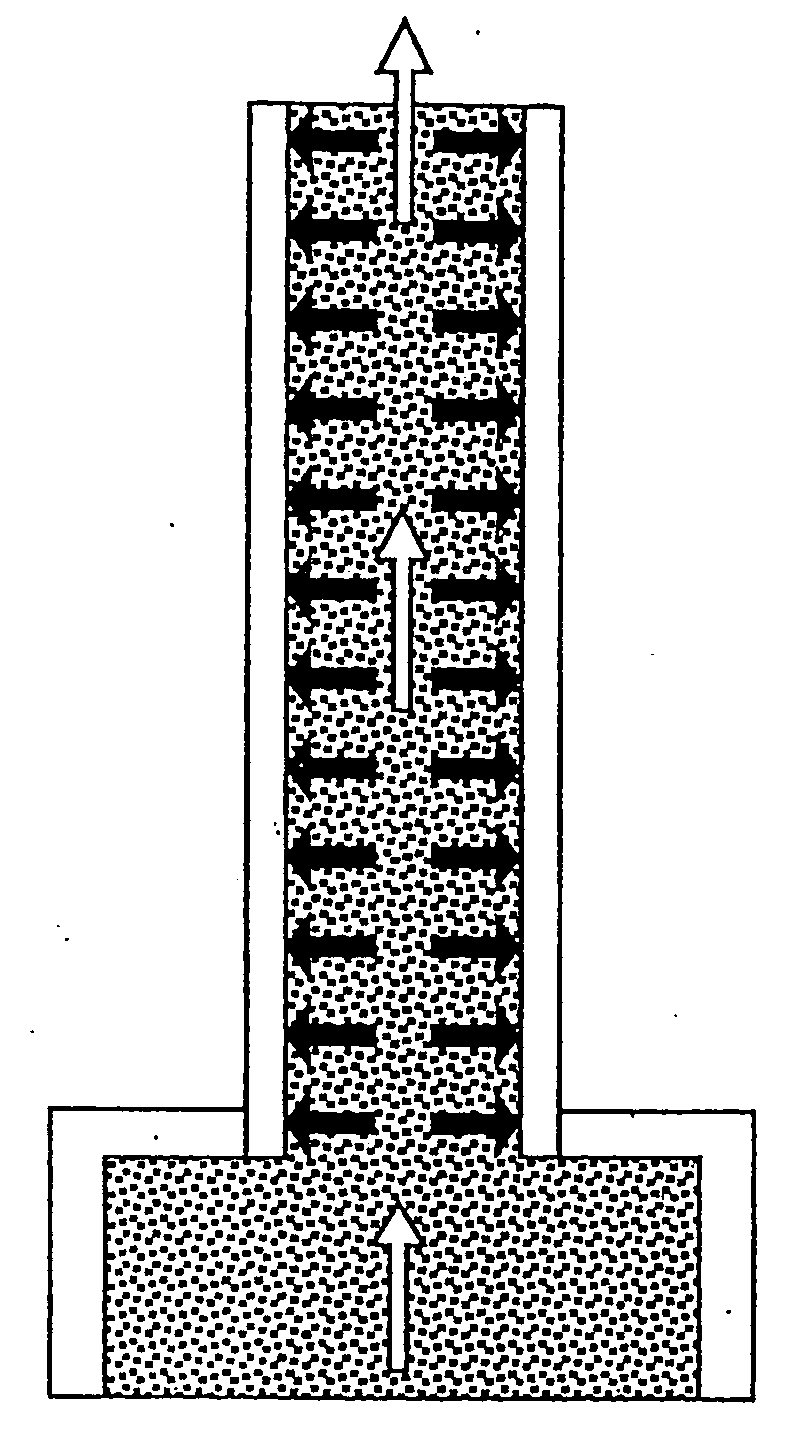Abrasive machining media containing thermoplastic polymer
a technology of thermoplastic polymer and machining media, which is applied in the direction of manufacturing tools, honing tools, other chemical processes, etc., can solve the problems of high level of dexterity, increased polishing challenges, and complicated polishing, and achieves enhanced elastomeric characteristics, improved abrasive machining, and improved elasticity.
- Summary
- Abstract
- Description
- Claims
- Application Information
AI Technical Summary
Benefits of technology
Problems solved by technology
Method used
Image
Examples
example 1
[0026]Ninety parts by weight pelleted KRATON thermoplastic polymer was shredded, heated to 200° F. and combined with 10 parts by weight automotive-grade lubricating grease. After mixing the liquified KRATON and lubricating grease but prior to cooling, equal parts by weight of the mixture and a traditional silicone rubber (polyorganosiloxane polymer) medium were manually mixed and then cooled. The resulting mixture presented enhanced elastomeric characteristics over the silicone medium alone and, upon testing with addition of abrasive particles more, achieved even distribution through internal fabricated article passages. In comparative trials, the medium provided enhanced abrasion as compared with silicone medium containing the same type and amount of abrasive particles.
example 2
[0027]In a subsequent study, trial batches of media were prepared using six different formulations including silicone-based media, blends of silicone-based and thermoplastic polymer-based media, and thermoplastic rubber-based media. The study was executed by systematically abrasive flow machining approximately 100 identical castings using these various media formulations. The results of the study confirm that the performance characteristics attributed to the non-silicone content of the test media contrasted and complimented that of the silicone-based media content. Specifically, the non-silicone component imparted a higher degree dilatant behavior. The enhanced elasticity produced effects including more uniformly distributed abrasive work, increased flow rates at lower externally applied pressures, and the tendency preferentially to abrade the shorter radius of curved tubular passageways. The performance of the blended media benefitted from the characteristics of both the silicone a...
example 3
[0029]Ninety-five parts by weight of food grade white mineral oil were combined with 5 parts by weight of KRATON styrene-ethylene / butylene-styrene block copolymer at a temperature of approximately 225° F. The components were blended in a vessel provided with a manual stirring blade. One part by weight of the resulting admixture was combined with two parts by weight of aluminum oxide, 100 grain size. The resulting admixture was used in accordance with methods disclosed in previously mentioned U.S. Pat. No. 3,521,412. It should be borne in mind that the abrasive used will be varied to suit the individual application. A satisfactory abrasive for use in working on steel is silicon carbide which is readily available in standard grit sizes. An abrasive suitable for many applications is the aluminum oxide mentioned above. Other abrasives can include diamond dust, boron carbide, rouge, corundum, garnet, alundum, glass or occasionally fiber or shell materials. Commonly, the abrasive per poun...
PUM
| Property | Measurement | Unit |
|---|---|---|
| Temperature | aaaaa | aaaaa |
| Percent by mass | aaaaa | aaaaa |
| Percent by mass | aaaaa | aaaaa |
Abstract
Description
Claims
Application Information
 Login to View More
Login to View More - R&D
- Intellectual Property
- Life Sciences
- Materials
- Tech Scout
- Unparalleled Data Quality
- Higher Quality Content
- 60% Fewer Hallucinations
Browse by: Latest US Patents, China's latest patents, Technical Efficacy Thesaurus, Application Domain, Technology Topic, Popular Technical Reports.
© 2025 PatSnap. All rights reserved.Legal|Privacy policy|Modern Slavery Act Transparency Statement|Sitemap|About US| Contact US: help@patsnap.com


